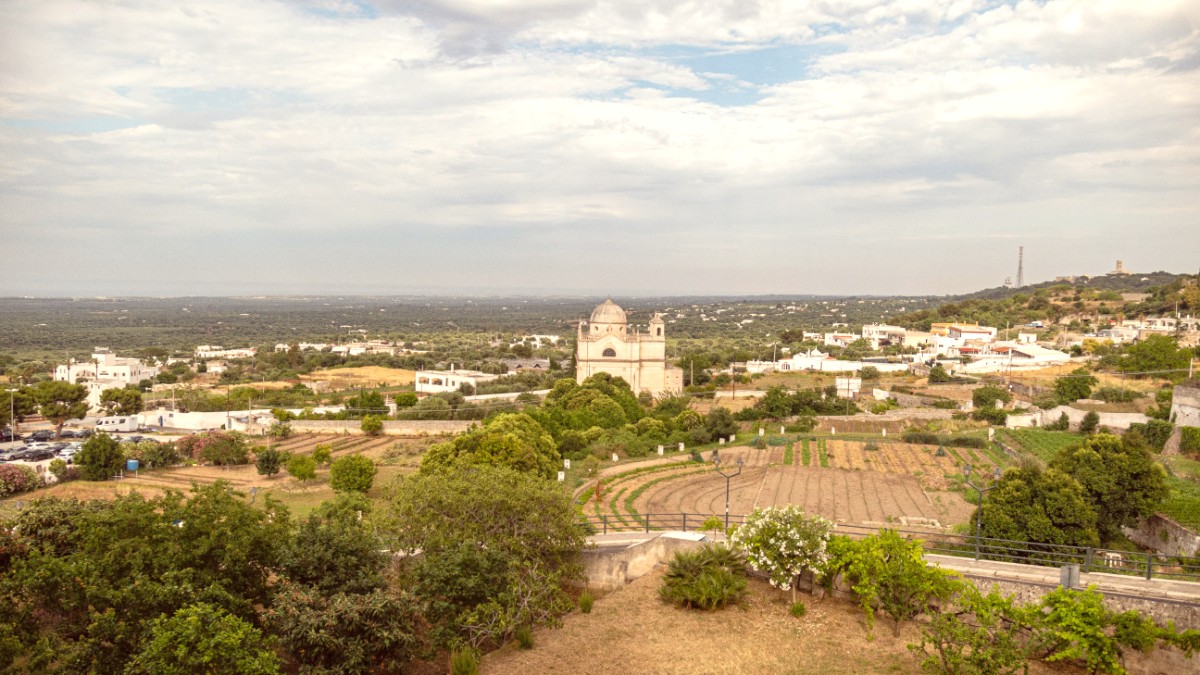
Puglia, Italy
Spring (April-May): Temperatures typically range from 15-25°C (59-77°F). This period has moderate precipitation and comfortable humidity. The landscape comes alive with blooming wildflowers.
Summer (June-August): Temperatures average 28-35°C (82-95°F). Heatwaves can push temperatures above 40°C (104°F). Precipitation is very low. Humidity can feel high, especially along the coast.
Autumn (September-October): Temperatures range from 18-28°C (64-82°F). Moderate precipitation occurs, especially in late autumn. Humidity remains comfortable.
Winter (November-March): Temperatures average 8-15°C (46-59°F). This season sees higher precipitation, especially from December to February. Humidity can also be high.
High Season (July-August): Warmest weather, ideal for beaches. All tourist businesses operate extended hours. Expect crowds, peak prices, and hot temperatures.
Shoulder Season (April-June, September-October): Pleasant temperatures, ideal for sightseeing. Fewer crowds, lower prices. Spring blooming, autumn olive harvest. Sea might be cool early/late.
July - August
Beaches are ideal for swimming and sunbathing. All tourist businesses operate extended hours.
Crowds gather, prices peak. Hot temperatures make daytime sightseeing tiring.
April - June, Sept - Oct
Pleasant temperatures, fewer crowds, lower prices. Spring blooms, autumn olive harvest.
Sea might be cool early/late. Some smaller coastal businesses reduce hours.
November - March
Fewest tourists, authentic local experience. Lowest prices. Mild winter escape.
Many tourist businesses close. Limited beach activities. Cooler temperatures and higher rain chance.
Italy is a member of the Schengen Area. Schengen visa for non-EU/EEA/Switzerland citizens for stays up to 90 days. Apply at your Italian embassy. Visa-exempt countries (US, Canada, UK, Japan) do not need a visa for short stays.
Passport valid three months beyond departure, issued within 10 years. Proof of accommodation, sufficient funds, Travel insurance. Return or onward ticket.
Visa-exempt travelers will obtain ETIAS authorization. Check official EU sources for updates.
Required for stays over 90 days or specific purposes like work or study.
No general entry fee for tourists to Italy. Immigration control upon first Schengen port entry.
Typical tourism in Ostuni needs no special permits. Drone use follows local regulations.
No specific health entry requirements currently. Travel regulations can change rapidly.
Plan your budget for an Ostuni trip based on your travel style. Prices vary depending on the season and preferences.
The official currency of Italy is the Euro (€, EUR). ATMs (Bancomat) are widely available. Credit and debit cards are accepted at hotels and larger shops. Carry some cash for smaller purchases and local markets.
Accommodation: Hostel dorm (€25-€40), B&B/Guesthouse (€40-€100), Mid-range Hotel (€80-€150), Luxury (€150-€500+).
EU citizens use EHIC. Non-EU citizens: comprehensive Travel insurance is highly recommended. Pharmacies offer minor ailment advice.